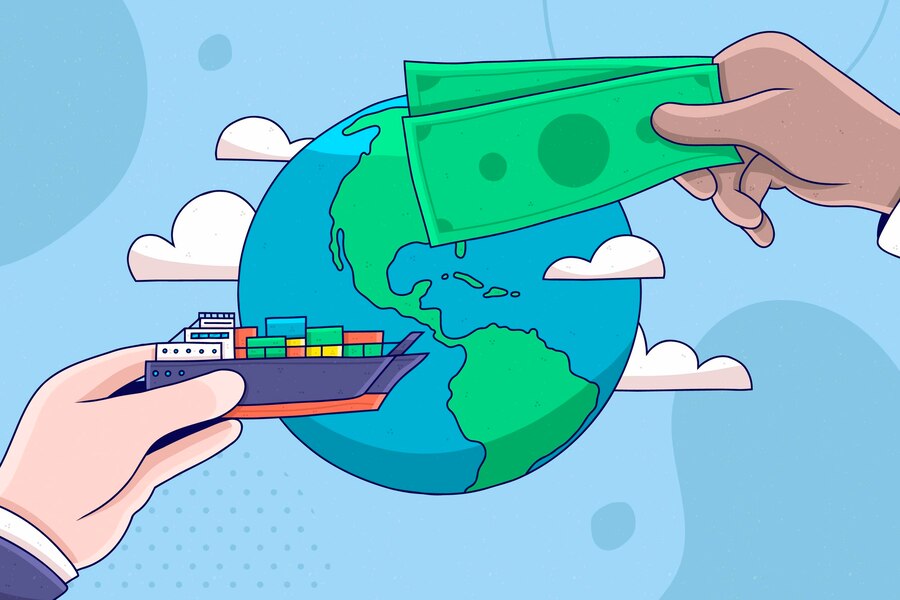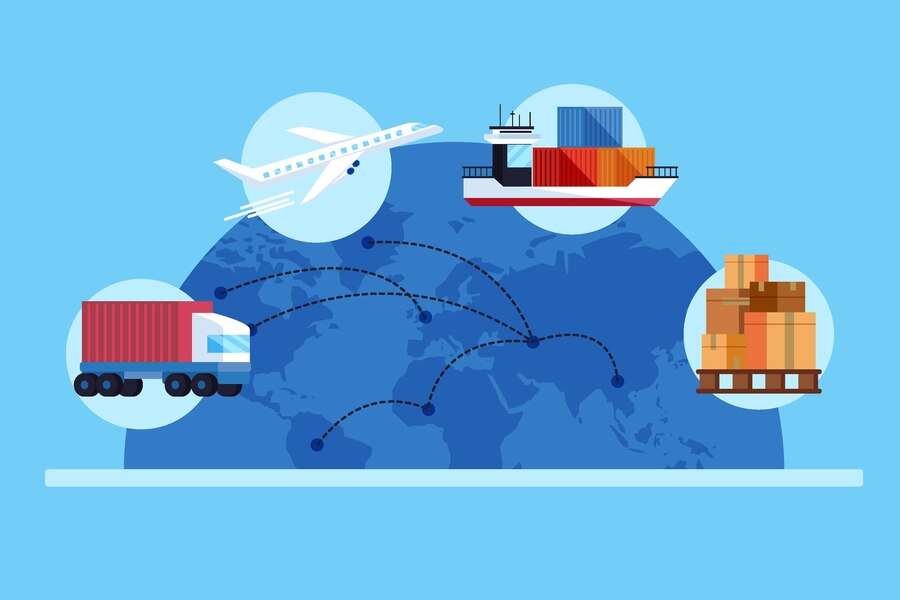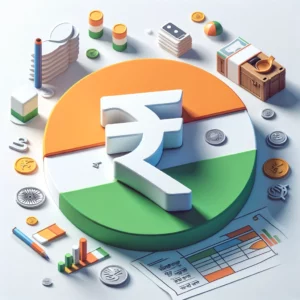A Detailed Guide on GST on Export of Goods to Nepal and Bhutan
- 20 Sep 24
- 14 mins

A Detailed Guide on GST on Export of Goods to Nepal and Bhutan
Key Takeaways
- Zero-rated supply under GST refers to exports and supplies to SEZs taxed at 0%, allowing for input tax credit refunds.
- GST affects exports to Nepal and Bhutan by treating them as zero-rated supplies, requiring specific documentation for compliance, and enabling input tax credit claims.
- Documents required for exporting under GST include the GST invoice, shipping bill, LUT or bond, and export declaration forms.
- The main challenges under GST for exporters involve navigating complex laws, managing compliance and paperwork, and addressing delayed input tax credit refunds.
- Ensuring GST compliance for exports of goods to Nepal and Bhutan involves maintaining accurate documentation, timely GST return filings, and following specific GST export provisions.
The Goods and Services Tax (GST) is a revolutionary tax reform that has transformed the landscape of indirect taxation in many countries, including India. It's a comprehensive, multi-stage, destination-based tax that is levied on every value addition.
Knowing the basics of GST is crucial for businesses engaged in international trade, as it directly impacts the cost, compliance, and competitiveness of trade. Learn how GST on the export of goods to Nepal and Bhutan functions in this blog.
GST on Exports
Exports are generally treated favorably under GST regimes worldwide, including India's, to encourage foreign trade and earn foreign exchange. GST on exports is pegged at a zero rate, meaning exporters can claim a refund on the input tax credit, making trading more competitive in the international market.

The GST regime offers two primary options for the export of goods
- Option 1: Export of Goods after Payment of IGST
Exporters have the option to export goods after paying the Integrated Goods and Services Tax (IGST). This approach allows exporters to claim a refund of the IGST paid on exported goods, ensuring that the products remain competitive in the global market.
The refund mechanism aims to stop the export of taxes and ensure that domestic tax obligations do not unduly burden exporters.
- Option 2: Export of Goods without Payment of IGST under a Bond or Letter of Undertaking (LUT)
Alternatively, exporters can choose to export goods without paying IGST by furnishing a Bond or a Letter of Undertaking (LUT). This option is particularly beneficial for exporters who wish to avoid the upfront payment of tax and the subsequent refund process.
It is designed to ease the cash flow for exporters, allowing them to operate more efficiently in the competitive international marketplace.
The Zero-Rated Supply Concept
Zero-rated supplies under GST pertain to the export of goods and services. This concept allows businesses to export goods without paying GST on their outward supplies, ensuring that the final product is competitively priced in international markets.
Types of Exports
There are two types of exports under GST: physical and deemed exports.
- Physical exports are the exports of goods or services to a place outside India. Deemed exports are the supplies of goods to specific people or locations within India that the government has notified as being appropriate. These are treated as zero-rated supplies and are eligible for a refund of the input tax credit or IGST paid.
- Merchant Exports – Merchant exporters buy goods from domestic suppliers and then trade them. The GST regime has introduced a Special Relief Scheme for merchant exporters, allowing them to procure goods at a nominal GST rate of 0.1%, thereby reducing their tax burden and enhancing their competitiveness.
GST Impact on Merchant Export
GST has simplified the procedure and reduced the compliance burden for merchant exporters. Under GST, the merchant exporter can procure the goods from the domestic supplier at a nominal GST rate of 0.1% or without payment of GST under a bond or LUT.
The merchant exporter can also claim a refund of the input tax credit on the inputs or input services used in the trade of goods.
Special Relief Scheme for Merchant Exporter
The government has introduced a special relief scheme for merchant exporters to boost their competitiveness in the international market. Under this scheme, the merchant exporter can procure the goods from the domestic supplier at a concessional GST rate of 0.1%, subject to certain conditions. The conditions are:
- The merchant exporter and the domestic supplier should be registered under GST and have valid GSTINs.
- The merchant exporter should mention his GSTIN and the invoice number of the domestic supplier in the shipping bill.
- From the date of the domestic supplier's invoice, the merchant exporter must trade the goods within 90 days.
- The merchant exporter should furnish a copy of the shipping bill and the tax invoice of the domestic supplier to the jurisdictional officer of the domestic supplier within 90 days from the date of trade.
- The merchant exporter should file GSTR-1 and GSTR-3B and mention the details of export invoice and shipping bill in Table 6A of GSTR-1
GST on Export of Goods to Nepal and Bhutan
Services & goods supplied to Nepal and Bhutan hold a unique position in the context of the Goods and Services Tax (GST) regime in India. Under GST, exports of goods are generally considered as 'zero-rated supplies', meaning exporters can ship goods or provide services without paying GST on them.
For services, whether they are treated as trade or not, and the applicability of Integrated Goods and Services Tax (IGST) hinges on specific criteria outlined in the GST legislation.
Special Provisions for Nepal and Bhutan
While the principle of zero-rated supplies generally applies to all trades, exports to Nepal and Bhutan are subject to unique considerations under the Indian GST framework.
Unlike trades to other countries, which are entirely free from GST, exports to Nepal and Bhutan can sometimes attract GST, depending on various conditions and compliance with specific documentation requirements.
GST on Export to Nepal
Exports to Nepal are indeed treated differently under the GST regime. While they can qualify as zero-rated supplies, allowing exporters to claim input tax credits, certain conditions must be met for these benefits to apply. The distinction lies in the documentation and procedural requirements that exporters must fulfill to avail themselves of the zero-rating benefits.
GST on Export to Bhutan
Similarly, trade to Bhutan are subject to GST regulations, with specific rules governing the tax treatment of such transactions. The process for exporting goods to Bhutan under GST involves a detailed compliance and documentation procedure, akin to that for Nepal, to ensure that exporters can benefit from the zero-rated supply provisions.
Documentation and Compliance for Exporting to Nepal and Bhutan
The success of exporting goods to Nepal and Bhutan under GST largely hinges on proper documentation and adherence to compliance procedures. Exporters are required to furnish comprehensive documentation, including GST invoices, shipping bills, and other regulatory documents, to substantiate their claims for zero-rated supply benefits.
Moreover, exporters must navigate through a series of compliance procedures, from GST registration to the submission of export documents and filing of returns, to ensure a smooth and compliant trade process.
Services Supplied to Nepal and Bhutan: Export or Not?
According to the GST law, for a service to qualify as an export, it must satisfy the following conditions:
- The supplier of the service is located in India.
- The recipient of the service is located outside India.
- The place of supply of the service is outside India.
- Where the Reserve Bank of India has permitted it, the supplier has received payment for the service in convertible foreign currency or in Indian rupees.
- The supplier and recipient are not merely establishments of a distinct person.
When services are supplied to Nepal and Bhutan, they can be considered exports if they meet the above criteria. Importantly, the requirement for payment in convertible foreign exchange (or in Indian rupees, where allowed by the RBI) is crucial.
This means that services supplied to entities in Nepal and Bhutan could be treated as exports, provided the payment is received in accordance with the foreign exchange regulations.
Challenges and Economic Implications

Despite the clear guidelines and provisions, exporters face numerous challenges in implementing GST for exports to Nepal and Bhutan.
These include handling the increased compliance requirements and comprehending the intricate regulatory structure, as well as dealing with the liquidity crisis brought on by postponed GST returns.
Additionally, the GST significantly affects trade volumes, pricing strategies, and bilateral trade connections when it comes to exports to these countries.
Navigating the Future
As businesses continue to adapt to the GST regime, the export landscape to Nepal and Bhutan is expected to evolve. Strict adherence to GST standards, careful documentation, and in-depth comprehension are essential for success.
Through the successful implementation of GST, exporters may enhance their competitive advantage in three critical domains.
With the complexities of GST on services supplied to Nepal and Bhutan, several key considerations come to the forefront, including return filing, business improvements, the role of registered suppliers, conditions of receipt, fundamental conditions under GST, compliance with the Foreign Exchange Management Act (FEMA), and specifics about the country of import and the coverage of countries under this provision.
- Return Filing for Services Supplied to Nepal and Bhutan
For businesses engaging in the supply of services to Nepal and Bhutan, the process of return filing under GST remains an essential compliance requirement. Registered providers have to report their deals, which makes sure that cross-border services are accurately shown.
This compliance not only adheres to the GST regulations but also facilitates a transparent and traceable system for international service exchanges.
- Business Improvements through Streamlined Processes
The provision to supply services to Nepal and Bhutan without the levy of IGST has opened avenues for significant business improvements. Improving firm operating efficiency, reducing cross-border transaction costs, and fostering trade links with adjacent nations are all benefits of simplifying the tax structure for these services.
- Registered Supplier of Services
A registered supplier of services plays a crucial role in this framework, acting as the backbone of cross-border trade in services. These suppliers must comply with GST regulations, including registration, invoice generation, and return filing, to maintain transparency and adhere to the tax laws governing international service transactions.
- Supplier of Services under GST
The supplier of services must ensure that their offerings to Nepal and Bhutan meet the specified criteria to qualify as exports under GST.
This includes the condition of receipt in convertible foreign exchange, which aligns with the stipulations of the Foreign Exchange Management Act (FEMA), thereby integrating GST compliance with foreign exchange regulations.
- Condition of Receipt in Foreign Exchange
One of the fundamental conditions for services supplied to Nepal and Bhutan to be considered as exports under GST is the receipt of payment in convertible foreign exchange or in Indian rupees wherever permitted by the Reserve Bank of India.
This criterion ensures the inflow of valuable foreign exchange, contributing to the economic stability and foreign currency reserves of the country.
- Fundamental Conditions under GST for Cross-Border Services
The supply of services to Nepal and Bhutan adheres to fundamental conditions under GST that classify these transactions as exports, provided they meet all regulatory requirements, including payment receipt in the prescribed manner.
These conditions are designed to streamline the tax implications on cross-border services, promoting ease of business and compliance.
- Foreign Exchange Management (Currency) Regulations
Under the Foreign Exchange Management Act (FEMA), specific guidelines dictate the transactional and financial aspects of international services.
These regulations cover the manner of receipt and payment, ensuring that the supply of services to Nepal and Bhutan complies with India's foreign exchange policies and contributes positively to the nation's financial health.
- Country of Import and Coverage
Nepal and Bhutan, as countries of import for Indian services, fall under a special category due to their geographical proximity and unique bilateral relations with India.

The GST framework provides specific provisions for these countries, emphasizing the need for a seamless and efficient process for the export of services, thereby covering these nations under a preferential treatment scheme.
Services Supplied to Nepal and Bhutan: Export or Not?
As per the GST framework, the supply of services to Nepal and Bhutan can be zero-rated, similar to other exports. This implies that no IGST is levied on the supply of services to these countries, provided the services qualify as exports under the GST law, including the receipt of payment in the prescribed manner.
However, it's essential to note that while the services may be zero-rated, compliance with the documentation and procedural requirements is mandatory for the suppliers of services to avail of the benefits of zero rating, such as claiming a refund on the input tax credit.
This includes filing the necessary returns, providing proof of receipt of foreign currency, and adhering to other export-related compliance measures outlined by the GST rules and the foreign exchange guidelines issued by the RBI.
Conclusion
GST on the export of goods to Nepal and Bhutan presents both opportunities and challenges. Under the GST structure, exporters have to deal with issues including comprehending intricate GST laws, handling paperwork and compliance, and handling delayed input tax credit reimbursements.
With proper planning and compliance, businesses can maximize the benefits of GST, enhancing their competitiveness in the Nepalese and Bhutanese markets.
💡Streamline your GST payments effortlessly with Pice application – your one-stop solution for hassle-free tax management. Download now and transform the way you manage GST payments!
 By
By 


















